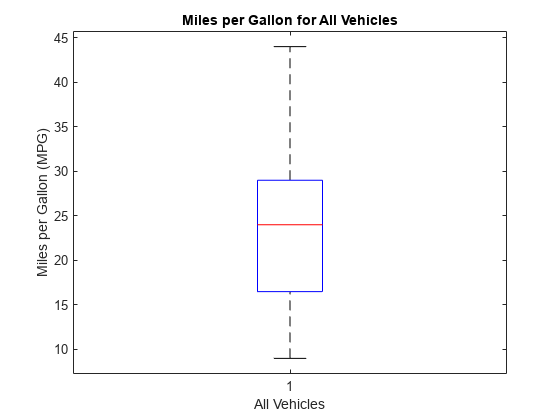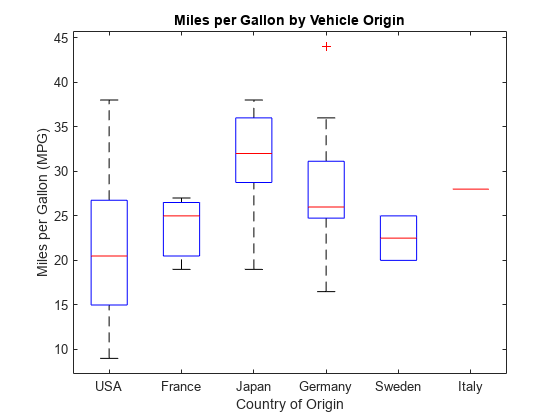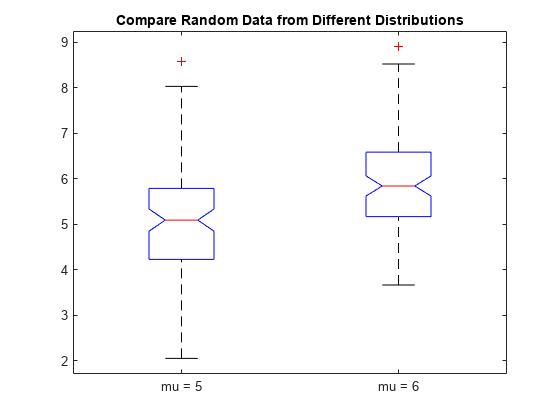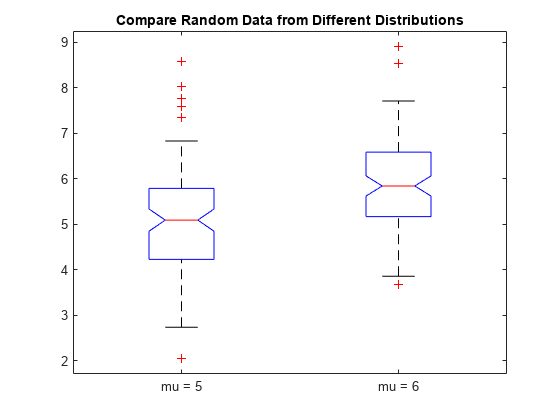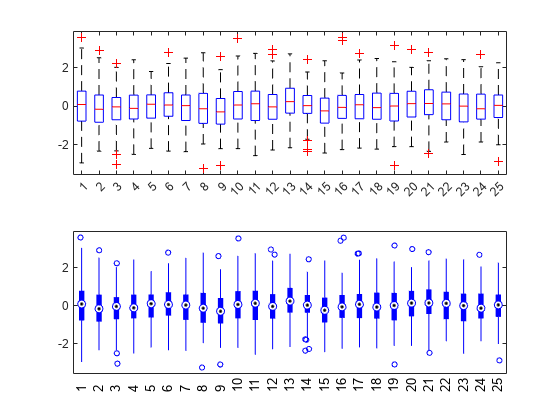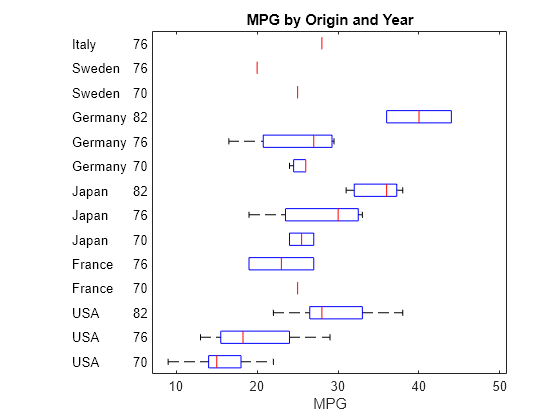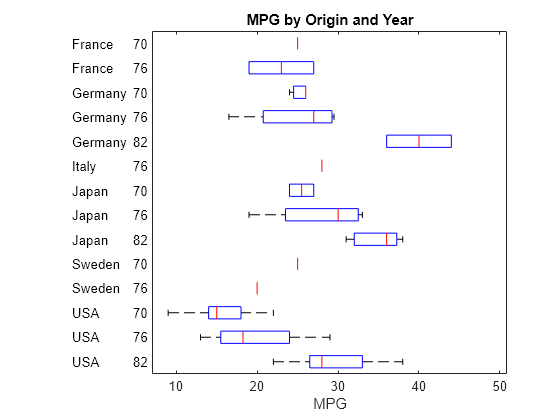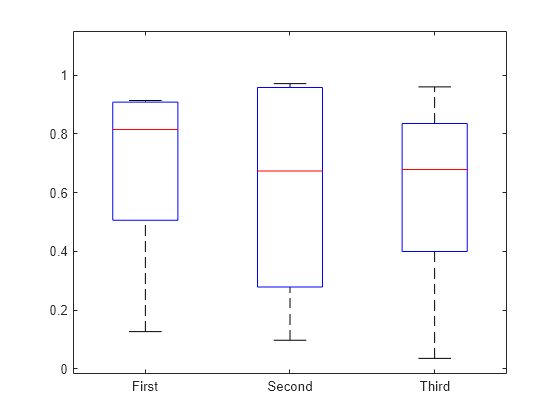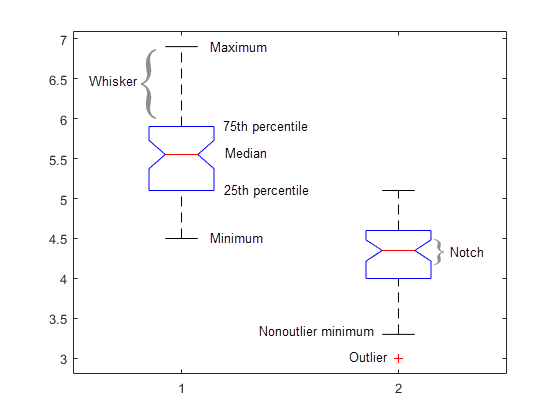boxplot
用箱线图可视化摘要统计量
说明
boxplot( 创建 x)x 中数据的箱线图。如果 x 是向量,boxplot 绘制一个箱子。如果 x 是矩阵,boxplot 为 x 的每列绘制一个箱子。
在每个箱子上,中心标记表示中位数,箱子的底边和顶边分别表示第 25 个和 75 个百分位数。须线会延伸到不是离群值的最远端数据点,离群值会使用 '+' 标记符号单独绘制。
boxplot( 使用坐标区图形对象 ax,___)ax 指定的坐标区和任何上述语法创建箱线图。
boxplot(___, 使用由一个或多个 Name,Value)Name,Value 对组参量指定的附加选项创建箱线图。例如,您可以指定箱子样式或顺序。
示例
输入参数
名称-值参数
详细信息
提示
boxplot创建数据的可视化表示,但不返回数值。要计算样本数据的相关摘要统计量,请使用以下函数:您可以在图窗窗口中使用数据游标查看数据值和组名称。游标显示受
datalim参数影响的任何点的原始值。您可以使用gname函数对离群值所属的组加标签。要修改箱线图组件的图形属性,请使用
findobj和Tag属性来查找组件的句柄。箱线图组件的Tag值取决于参数设置,如下表所示。参数设置 标记值 所有设置 'Box''Outliers'
当 'PlotStyle'是'traditional'时'Median''Upper Whisker''Lower Whisker''Upper Adjacent Value''Lower Adjacent Value'
当 'PlotStyle'是'compact'时'Whisker''MedianOuter''MedianInner'
当 'Notch'是'marker'时'NotchLo''NotchHi'
替代功能
您还可以使用 boxchart 函数创建 BoxChart 对象。虽然 boxchart 并未涵盖 boxplot 的所有功能,但它有一些优势。与 boxplot 不同,boxchart 函数:
支持沿组轴的分类标尺
提供图例选项
适合与
hold on命令结合使用具有改进的外观设计,帮助您更轻松地查看缺口
要控制对象的外观和行为,请更改 BoxChart 属性。
参考
[1] McGill, R., J. W. Tukey, and W. A. Larsen. “Variations of Boxplots.” The American Statistician. Vol. 32, No. 1, 1978, pp. 12–16.
[2] Velleman, P.F., and D.C. Hoaglin. Applications, Basics, and Computing of Exploratory Data Analysis. Pacific Grove, CA: Duxbury Press, 1981.
[3] Nelson, L. S. “Evaluating Overlapping Confidence Intervals.” Journal of Quality Technology. Vol. 21, 1989, pp. 140–141.
[4] Langford, E. “Quartiles in Elementary Statistics”, Journal of Statistics Education. Vol. 14, No. 3, 2006.
版本历史记录
在 R2006a 之前推出另请参阅
anova1 | kruskalwallis | multcompare | min | max | median | quantile | iqr | grpstats
